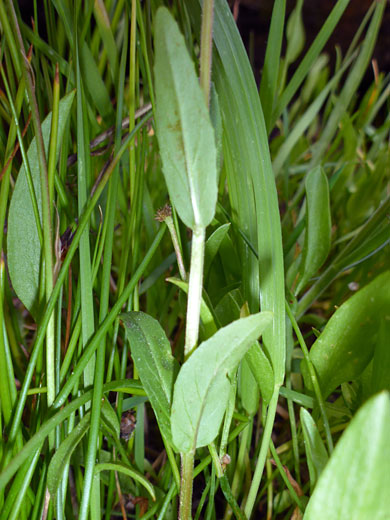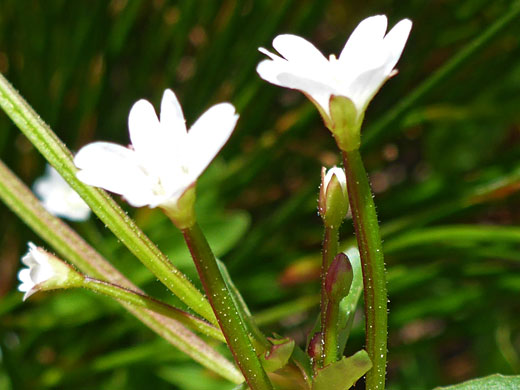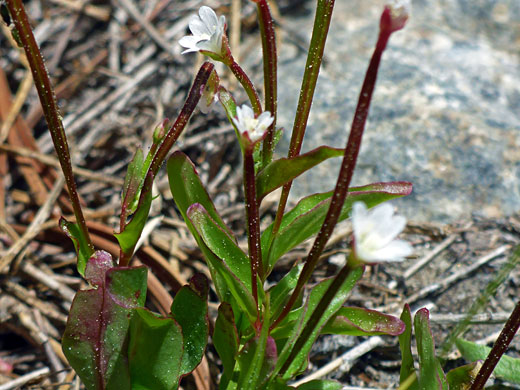Epilobium Lactiflorum, Milk-Flower Willowherb
Plants > Wildflowers > Onagraceae > Epilobium Lactiflorum
Common names:
Milk-flower willowherb, whiteflower willowherb
Family:
Scientific name:
Epilobium lactiflorum
Main flower color:
Range:
The Rocky Mountain states and all states to the west
Height:
Up to 20 inches
Habitat:
Streambanks, moist meadows, talus slopes, from near sea level to 12,000 feet
Leaves:
Narrowly ovate to lanceolate, short-stalked to sessile, up to 2 inches long, sparsely toothed
Season:
June to September
Identifying features of epilobium lactiflorum include the white petals, the club-shaped stigma and the relatively short hypanthium. This species is found over a wide range of elevations and locations, from the southern Rocky Mountains of New Mexico, to coastal regions of the Oregon and Washington.
The opposite leaves are lined by tiny, well-separated teeth, and have a few hairs along the margins but are otherwise glabrous. Stems have a covering of short, strigose hairs, arranged in vertical lines; hairs are most dense towards the base. Plants form small clumps, branching from the base.
Pedicels, ovaries and sepals are sparsely covered by short, glandular hairs. The petals are about twice as long as the sepals, up to a third of an inch. Petals are notched at the tip and crossed by a few branched veins.
The opposite leaves are lined by tiny, well-separated teeth, and have a few hairs along the margins but are otherwise glabrous. Stems have a covering of short, strigose hairs, arranged in vertical lines; hairs are most dense towards the base. Plants form small clumps, branching from the base.
Pedicels, ovaries and sepals are sparsely covered by short, glandular hairs. The petals are about twice as long as the sepals, up to a third of an inch. Petals are notched at the tip and crossed by a few branched veins.
All Contents © Copyright The American Southwest | Comments and Questions | Contribute | Site Map









